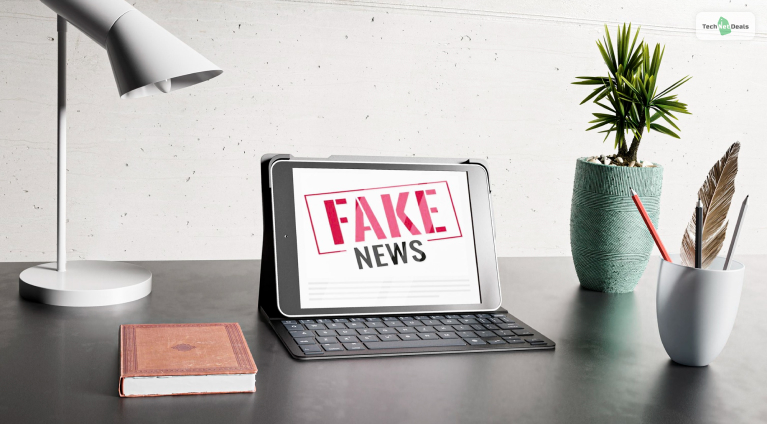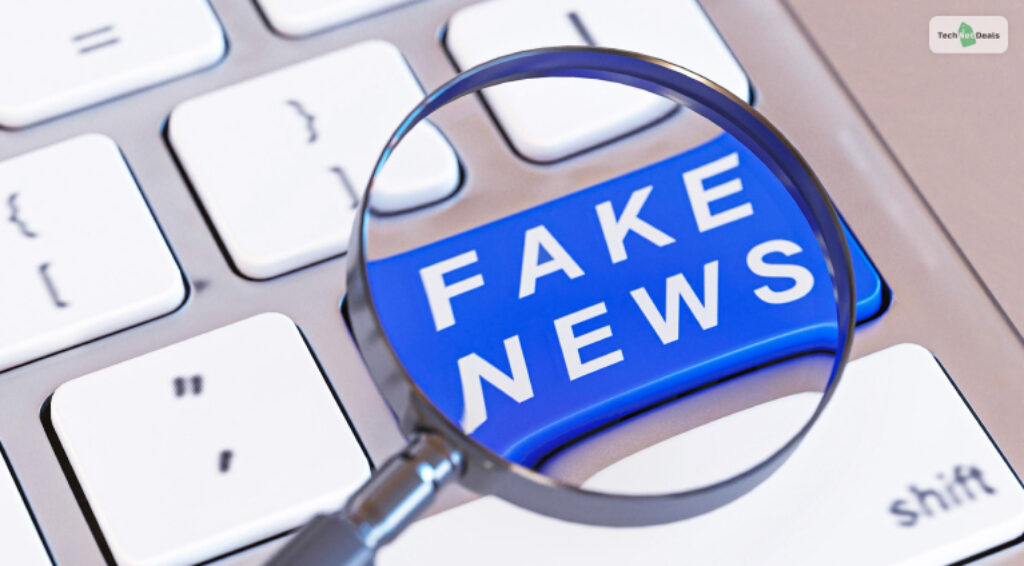
In today’s digital age, where information is just a click away, the ability to discern between real news and fake news has become a critical skill.
Students, in particular, are vulnerable to misinformation as they rely heavily on online sources for their studies and social interactions.
To help students navigate this complex information landscape, it’s crucial to develop the skills necessary to identify fake news.

In this guide, we’ll provide you with valuable insights and techniques to spot fake news effectively while emphasizing the importance of critical thinking. As students, you can empower yourselves to become more responsible consumers of information.
And if you ever find yourself needing assistance with academic research or writing, remember the availability of online custom writing services.
But being always in social progress, you need to remember some tips:
What is fake news?

Fake news and misleading information are the same. It’s a more colloquial term to describe wrong and misleading information from what’s legitimate.
It can be a way of masquerading as real information or spreading something that is completely unreal and unrelated to any particular event. It falls under the following categories –
Deliberately inaccurate stories – the first type of misinformation spreading or fake news involves people who are aware of a story being inaccurate or false. They publish a false story even after knowing that it’s wrong. This is a way to manipulate public information.
Misleading stories – some platforms share stories that have some amount of truth with a massive portion of misinformation mixed with it. Such information is spread because the writer does not check the facts before publishing the article.
Misinformation isn’t something new, and “fake news” is a fairly new term that was coined in the 19th century. This term has been used more and is popular with the dominance of the internet.
The pre-internet era required journalists to follow strict rules and codes to ensure the spread of authentic information. But now, social media is taking the helm, and with that, misinformation easily spreads around.
Ways to Identify & Avoid Fake News
Here are some ways to identify misinformation and avoid them –

1. Optimize Your Home Screen:
A cluttered home screen with many apps and widgets can make your phone slow. Try to keep it clean and organized.
2. Tackling the Menace of Fake News: A Guide for Students
In today’s information-saturated world, the spread of fake news is a serious challenge. It not only shapes public discourse but also influences political landscapes and personal relationships.
For students, navigating this tricky terrain is crucial as misinformation can hinder academic success, foster misunderstandings, and lead to uninformed choices.
3. Online Writing Services: Your Academic Ally
Amidst the clutter of online information, distinguishing between fact and fiction can be daunting. Here’s where a trusted online writing service becomes your academic.
These platforms connect you with professional writers adept at sifting through information chaos, ensuring that your academic projects are backed by accurate, thoroughly researched content.
Leveraging such services not only boosts academic performance but also instills a sense of confidence in the integrity of your work.
4. Sharpening Your Critical Thinking Tools
The first line of defense against fake news is honing your critical thinking skills. Challenge yourself to scrutinize all online content critically, including information that aligns with your beliefs.
Be mindful of personal biases and recognize how fake news often exploits emotional triggers and confirmation bias. Finally, a critical approach helps you discern facts from fiction effectively.
5. Source Evaluation: A Key Skill
Determining the authenticity of news involves a critical assessment of its source. Consider these factors:
Author Credentials: Verify the author’s expertise in the subject matter. Reliable information typically comes from seasoned journalists as well as subject matter experts.
Aside from checking the author’s background, it’s important to check the source of the fake news. But how will you check it? Here are some useful tricks –
- Check if the article is well-written.
- Does the article look real?
- Look on the web and find out if there are other stories written by other authors resembling the same facts.
- Fake news spreading platforms often share misinformation and make it look real. However, they lack news on other topics on their platform. A useful way to identify if it’s correct is by going to the “About” page and checking the organization’s credibility.
6. Publication Standards
Look into the reputation and editorial practices of the publication or website. Trustworthy sources maintain high ethical and editorial standards, unlike lesser-known or biased platforms.
Citations as Proof: Genuine news stories are often supported by citations and references, unlike fake news which typically lacks such substantiation.
7. Cross-verification and Fact-Checking
Enhance the credibility of your information by cross-referencing with multiple sources and using established fact-checking tools like Snopes and FactCheck.org. Hence, these resources are pivotal in validating the authenticity of a story or claim.
9. Consistency is Key
Inconsistencies, as well as contradictions, are common in fake news. Compare information across various reputable sources to spot discrepancies. A lack of consensus among reliable sources is a significant indicator of misinformation.
10. Check the story
If the story is credible, it has to be on different platforms. It’s best to look for the story on other news platforms that you see as credible sources of information.
If the same information appears on other platforms. Most credible news platforms always check their sources before publishing any news on their platform.
11. Steering Clear of Sensationalism
Be wary of sensational headlines and clickbait tactics, common tools in the fake news arsenal. Look beyond attention-grabbing headlines to understand the full context of the story.
12. Visual Vigilance: Images and Videos
Misinformation isn’t limited to text. Manipulated visuals are also a part of the fake news ecosystem. Utilize reverse image searches and video analysis tools to verify the authenticity of images and videos.
It’s common for fake news spreading platforms to use Photoshopped pictures to manipulate your idea of an event. In fact, they sometimes take photos from unrelated websites to spread fake news.
Even most perfectly photoshopped photos look unreal if you look closely. Use tools like Google Reverse Image search to find out if the image has been changed or not. Also, these images are used without context, which is a good way to identify if it’s fake or not.
13. Staying Ahead in the Digital Landscape
With digital dynamics constantly evolving, staying informed about the latest trends in misinformation is vital. Consider enrolling in online courses or workshops on media literacy. Therefore, keep abreast of the latest methods used in spreading fake news.
As you start to stay ahead, you also learn different ways to deflect misinformation and fake news. In fact, if you manage to stay away from fake news, you can also spread alertness and caution about the misinformation misleading people.
Maintaining the speed and performance of your mobile phone involves a combination of regular software updates, prudent management of apps and data, and mindful usage of resources. By implementing these strategies, such as clearing the cache, uninstalling unused apps, limiting background processes, and optimizing your phone’s settings, you can significantly improve the efficiency and longevity of your device.
Regular attention and maintenance will ensure that your phone continues to meet your needs in terms of speed and performance, making your digital experience more enjoyable and efficient.
Remember, the specific steps you take might vary depending on your phone’s model and age, but the underlying principles of good device management remain the same.
Read Also:






